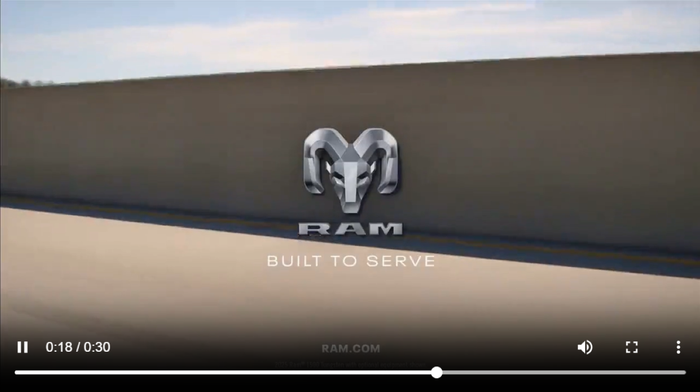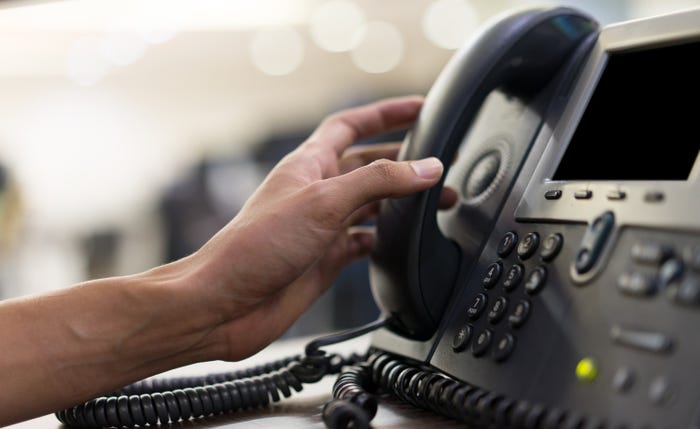The Great Rate Debate
Some of the most heated conversations I've had with clients center on whether internal labor rates should be the same as retail rates. Even the mention of such a thing in today's business climate is received with unusual facial expressions and, in some cases, flat-out laughter from dealers who are discounting their internal rate well below their local markets. These are some of the printable comments
July 1, 2009

Some of the most heated conversations I've had with clients center on whether internal labor rates should be the same as retail rates.
Even the mention of such a thing in today's business climate is received with unusual facial expressions and, in some cases, flat-out laughter from dealers who are discounting their internal rate well below their local markets.
These are some of the printable comments against increasing the rate:
“That's nothing but ‘funny money.’”
“All I'm doing is charging myself, taking it out of my right pocket and putting it in my left pocket.”
“If I increased my rate, I would have to change pay plans for all my sales managers.”
“My used-car grosses will go down!”
But comments from clients who have increased their internal rates to match retail include the following:
“My used car grosses actually went up!”
“We never missed a beat in used cars and my gross and net profit in my fixed operations jumped up!”
The topic of internal rates has been discussed and cussed for years. But are these comments accurate? Let's look at the arguments from both sides:
Is it Funny Money?
Let's examine two scenarios. For this first comparison, assume that the internal labor rate is $55 per flat rate hour, the average parts sales at cost-per-transaction are $124.31, the average labor hours per internal repair order are 1.5 hours and the hours per cosmetic detail are 3.5 hours per transaction. Chart A shows additional key averages.
Chart A: Assumptions
Service Performed | Amount per | Service Performed | Amount per |
|---|---|---|---|
Average cost for parts per inspection @ cost | $124.31 | Proposed new labor rate (same as retail) | $75.00 |
Flat rate labor time | 1.5 | Detail labor time per used car | 3.5 |
Parts mark-up over cost | 40% | Detail cost of sales | $15.00 |
Current internal labor rate | $55.00 | # of inspections per month | 45 |
Technician cost of sales per FRH | $19.25 |
Now let's raise the internal labor rate to match the retail rate at $75 per flat rate hour, and the internal parts mark-up yields the same as the retail manufacturers recommended list price. (Without any type of accelerator on the parts prices 167.0% time inventory cost).
(See Chart B.)
Chart B
Before | After | Increase Amount | % of Increase | |
|---|---|---|---|---|
Labor Rate | $55.00 | $75.00 | $20.00 | 36.4% |
Labor Sales per Transaction | $82.50 | $112.50 | $30.00 | 36.4% |
Parts Sales per Transaction | $174.03 | $207.60 | $33.56 | 19.3% |
Detail per Transaction | $192.50 | $262.50 | $70.00 | 36.4% |
Total Sales per RO | $449.03 | $582.60 | $133.56 | 29.7% |
Gross Profit - Labor | $53.63 | $83.63 | $30.00 | 55.9% |
Gross Profit - Parts | $49.72 | $83.29 | $33.56 | 67.5% |
Detail Gross Profit | $140.00 | $210.00 | $70.00 | 50.0% |
Total Gross Profit | $243.35 | $376.91 | $133.56 | 54.9% |
Gross Profit - Labor% | 65% | 74.3% | 9.3% | 14.4% |
Gross Profit - Parts% | 28.6% | 40.1% | 11.5% | 40.4% |
Detail Gross Profit % | 72.7% | 80.0% | 7.3% | 10.0% |
Total Gross Profit % | 54.2% | 64.7% | 10.5% | 19.4% |
Monthly Sales | $20,207 | $26,217 | $6,010 | 29.7% |
Monthly Gross | $10,951 | $16,961 | $6,010 | 54.9% |
Annual Sales | $242,478 | $314,603 | $72,124 | 29.7% |
Annual Gross | $131,408 | $203,533 | $72,124 | 54.9% |
The argument is most dealerships work from cost up when selling used cars. The dead cost is $12,500, well below book. The used-car manager determines he should gross $2,500 or more on that unit.
He or she works the deal to protect the expectation of gross profit in the unit, and will take a stand on the price at some point.
If the cost with reconditioning is the same as the above average of $133.56 (total sales per repair order increase) per unit, will this really affect gross per unit? The increased cost per repair order is included in the deal and the customer will pay the additional amount.
The increase in gross profit annually for fixed operations is $72,124. What additional expense will your dealership incur? Other than some commissions on the increases, maybe an increase in policy, heat, power, etc. There is no major increase. The biggest portion of this gross profit is net profit!
Send Cars Out for Reconditioning?
Every time you send a vehicle to an outside vendor for work that can be performed in your service department, you are probably losing money. Plus, you have helped a competitor of your service department.
An examination of most vendors' invoices will show a lower retail price paid to the vendor compared with the dealership internal price. But this is like comparing apples to grapefruits. The actual cost from the vendor is the final prize. But if we compare cost-to-cost, your service and parts departments are significantly less expensive. You must compare actual cost to actual cost.
Chart C shows the actual numbers.
Chart C
Outside Vendor | Internal Price | Internal vs. Vendor | |
|---|---|---|---|
Retail Price | $400.00 | $582.60 | $182.60 |
Actual Cost to Dealership | $400.00 | $205.69 | -$194.31 |
Gross Profit | $0.00 | $376.91 | $376.91 |
In most cases, I see work farmed out because of the pay plans for the sales managers. Their thought is they are making more money because the price charged to the car is cheaper. Nonsense! Make it a policy in your dealership that all work must be sent to your service department.
Get Them Out of Service Dept. Fast
Consider used cars sitting in the service department, waiting to be worked on.
Used cars are important to all departments. The grosses on these units are reasonable and controllable by the dealership. But the inventory must be turned and front line ready within a sensible time frame.
This means the service and parts departments should handle these cars as any other retail customer. They cannot sit. Some stores have hired technicians for used-car work. Others have been effective in having their mechanical staff complete the needed work. Either way, it must be done quickly.
The internal labor rate has a big impact on how fast your cars get done. Look at it from a service manager's point of view, someone held accountable for gross profit. The retail rate averages $75, the internal rate $55. Whose cars will be done first?
A policy needs to be established for how long it takes to turn a used car. I normally set a 72-hour limit on the mechanical and 24 hours from completion of the mechanical for the cosmetic work.
Insist on Quality
Quality repairs are a must! No excuses if the service and parts departments fall short in this area. It could mean major issues for the success of your used-car department. Poor workmanship cannot be tolerated.
Pricing Policy
Most service departments use some type of multi-level type pricing. The operation dictates the rate. A drivability repair is performed at a higher rate than and oil and filter changes. Your service department should allow your used-car department to take advantage of these lower rates.
Cosmetic Detail Work
A number of clients have a lower rate for detail work. In our example, a $75 rate may not be feasible. You can lower the rate and structure the cost of sales to yield a desired gross profit. The service department can yield a 70% gross profit percentage or any percentage of your choosing with a reduced labor rate. This could assist your dealership in securing the sales managers buy-in.
Chart D shows how to calculate it.
Chart D
Cost of sales | ÷ | Desired Cost of Sales Percentage | = | Required Effective Rate |
|---|---|---|---|---|
$14.50 | ÷ | 30% | = | $48.33 |
Accessory Installation
This portion of your business has become very competitive. Some OEMs have made it hard to compete. In this area you may want to reduce the rate and mark-up on parts to keep the work in house. Your service and parts managers need to develop a pricing guide, or menu, for accessories. Many OEMs offer incentives for the purchase of these items on stock orders. These must be factored into your consideration.
A Final Word
I was conducting an assessment of a dealership in Texas. The dealer cut his internal labor rate by half three years before, hoping his used-car grosses would go up. They went down by about $130 per unit. Moral of the story: An increase in your internal labor rate does not cause your used-car grosses to decrease.
Gross profit is a state of mind. If your internal rates are not at your retail rate, you are losing net profit. Our example shows a gain in gross of $72,124. This amount of increased gross can be extremely beneficial to many stores. If I'm just half right, we are still taking about a sizeable increase.
Lee Harkins is president and CEO of M5™ Management Services Inc. You can contact him at 205-747-8305 and [email protected].
About the Author
You May Also Like



